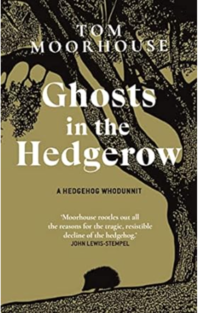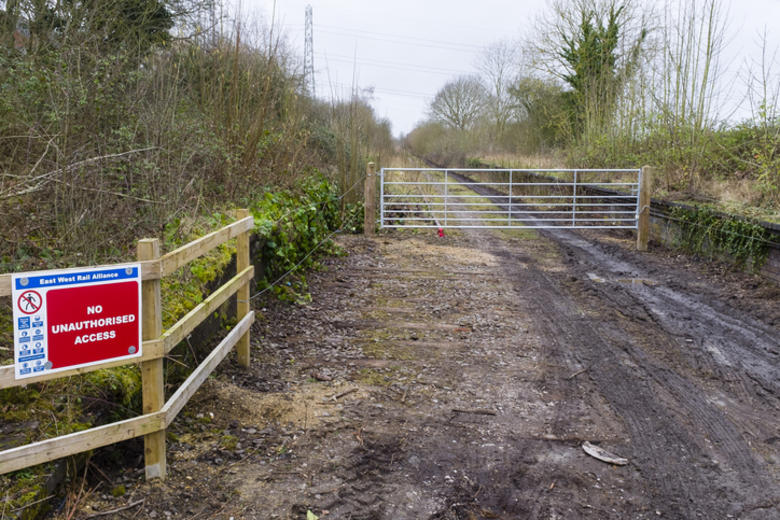WHAT HAPPENED TO THE HEDGEHOGS?

WHAT HAPPENED TO THE HEDGEHOGS?
A recent Oxford research study has culminated in super book exploring the crash in hedgehog population in the UK
Published: 15 January 2024
Author: Richard Lofthouse
Share this article

The author, Tom Moorhouse, a very-qualified wildlife expert and conservationist, sets out to explore and explain the crash in UK hedgehog populations in Ghosts in the Hedgerow, A Hedgehog Whodunnit.
The book is worn lightly with the ‘whodunnit’ theme a bit like playing Cluedo and trying to guess whop killed all the hedgehogs, plus footnotes that poke a bit of fun at the wildlife research scene.
One of Tom’s colleagues got nicked for suspected burglary, caught crawling hands and knees down a back passage behind some terraced houses in the middle of the night. He was actually tracking surburban hedgehogs.
Unfortunately there is only so far the jokes go to lighten a topic, the theme of which is disastrous if you love wildlife.
Fortunately there are some hedgehogs left, so the often-cited figures that get sloppily rehearsed again and again in newspapers, of a 36 million population in 1950, now wiped out by 98% to less than a million, these figures are simply not true because there was no reliable census of hedgehog numbers back in the day. It’s very difficult to track hedgehog populations, then and now, says Moorhouse.
But modernity has conspired to destroy a creature widely held to be popular, even if you haven’t read Beatrix Potter.
To summarise, the biggest culprit is intensive agriculture, the second biggest is probably traffic volumes, with the nation’s vehicle count now touching 40 million, a doubling since 1990.
Then there is a vast array of other negatives such as gardeners using slug pellets and robotic lawn mowers, the majority of which will ride up and over a hedgehog slicing it to bits. That last point was proved in a research study where real (dead) hedgehogs were used by Dr Sophie Lund Rasmussen (University of Oxford), also known as ‘Dr Hedgehog’, a separate story you can read about on QUAD.
But an even more obvious point in danger of being forgotten here, the clue being in the name ‘HEDGE-HOG’, ‘pig’ who lives in a ‘hedge’.
There are dramatically fewer hedges these days in the UK, the result of zillions being grubbed up in the post-war decades in the name of farm efficiency, typically paid for by grants.
While this forms a core habitat loss for hedgehogs, it appears to be worse than that. Merely putting the hedges back, even the nicely laid ones, is not enough if the adjacent fields have been heavily sprayed with pesticides, destroying the invertebrate food base that hedgehogs rely on.
This was proven when one of the author’s colleagues deposited a collection of live hedgehogs on an Oxfordshire farm, hoping that they would lead researchers to other hedgehogs, to establish where they were living. (1) there were no ‘others’ (2) the deposited hedgehogs all travelled to the nearest village and assorted gardens, with a typical travelling range of up to 2kms. One of them then ate a slug pellet and got posioned. Well done us. What they want is warmth and food, and they no longer get it on a modern farm unless nesting happily in a dungheap, only to get inadvertently wiped out the day it is carted away (this happens all the time – it is referred to as a ‘dire accidental outcome’).
Of the hedges left, gappy-at-the-base, flailed-on-top, and thereby ‘efficiently’ managed but disastrous for wildlife - most are not suitable habitats for hedghogs. They offer insufficient cover from foxes and badgers, the latter a major source of predation.
‘Tidiness’ is the enemy of profuse wildlife and biodiversity so there is pause for thought there for farmers and gardeners alike, some of whom aim at a wonderland of orderliness.
This entire problem-set is an aspect of the bigger issue addressed by Oxford alumnus and Oxford resident George Monbiot, currently an Honourary Fellow of Wolfson College, in his 2022 best-seller, Regenesis: Feeding the World without Devouring the Planet.
We’ve somehow got to achieve food security without destroying the biodiversity that is ultimately the basis for it, once you remove technology and inputs.
Ghosts in the Hedgerow by Tom Moorhouse (Penguin/Doubleday, 2023).
Not currently in a research post at Oxford University, Tom’s recent past was mostly in Oxford, starting with his DPhil on water vole conservation ecology in 2003, from a base in Oxford’s globally renowned wildlife research unit WildCRU. For his first post-doctoral position he designed and implemented a four-year replicated water vole reintroduction experiment in the Upper Thames, which resulted in the successful establishment of seven new populations of these endangered rodents. He completed studies on the distribution and impacts of American signal crayfish upon British riparian flora and aquifauna, and a year investigating how the management of UK farmland affects hedgehogs, the basis for the current book.
Leading image of a hedgehog by GETTY Images















